1. Gresham GE, Duncan PW, Stason WB, Adams HP, Adelman AM, Alexander DM, et al. Post-stroke rehabilitation: assessment, referral, and patient management: quick reference guide for clinicians. J Geriatr Drug Ther. 1996; 11:7–44.
2. Lamb SE, Ferrucci L, Volapto S, Fried LP, Guralnik JM. Women's Health and Aging Study. Risk factors for falling in home-dwelling older women with stroke: the Women's Health and Aging Study. Stroke. 2003; 34:494–501. PMID:
12574566.
3. Chen IC, Cheng PT, Hu AL, Liaw MY, Chen LR, Hong WH, et al. Balance evaluation in hemiplegic stroke patients. Chang Gung Med J. 2000; 23:339–347. PMID:
10958036.
4. Bonan IV, Colle FM, Guichard JP, Vicaut E, Eisenfisz M, Tran Ba Huy P, et al. Reliance on visual information after stroke. Part I: Balance on dynamic posturography. Arch Phys Med Rehabil. 2004; 85:268–273. PMID:
14966712.

5. Paci M, Nannetti L, Rinaldi LA. Glenohumeral subluxation in hemiplegia: an overview. J Rehabil Res Dev. 2005; 42:557–568. PMID:
16320150.

6. Turner-Stokes L, Jackson D. Shoulder pain after stroke: a review of the evidence base to inform the development of an integrated care pathway. Clin Rehabil. 2002; 16:276–298. PMID:
12017515.

7. Zorowitz RD, Idank D, Ikai T, Hughes MB, Johnston MV. Shoulder subluxation after stroke: a comparison of four supports. Arch Phys Med Rehabil. 1995; 76:763–771. PMID:
7632133.

8. Lee DK, Han SJ, Yoon SI, Kim MJ, Lee KH. Effect of arm sling on standing balance of hemiplegic patients. J Korean Acad Rehabil Med. 2004; 28:532–536.
9. Acar M, Karatas GK. The effect of arm sling on balance in patients with hemiplegia. Gait Posture. 2010; 32:641–644. PMID:
20888770.

10. Rensink M, Schuurmans M, Lindeman E, Hafsteinsdottir T. Task-oriented training in rehabilitation after stroke: systematic review. J Adv Nurs. 2009; 65:737–754. PMID:
19228241.

11. Cachupe WJ, Shifflett B, Kahanov L, Wughalter EH. Reliability of biodex balance system measures. Meas Phys Educ Exerc Sci. 2001; 5:97–108.

12. Berg K, Wood-Dauphine S, Williams JI, Gayton D. Measuring balance in the elderly: preliminary development of an instrument. Physiother Can. 1989; 41:304–311.

13. Verheyden G, Nieuwboer A, Mertin J, Preger R, Kiekens C, De Weerdt W. The Trunk Impairment Scale: a new tool to measure motor impairment of the trunk after stroke. Clin Rehabil. 2004; 18:326–334. PMID:
15137564.

14. Blum L, Korner-Bitensky N. Usefulness of the Berg Balance Scale in stroke rehabilitation: a systematic review. Phys Ther. 2008; 88:559–566. PMID:
18292215.

15. Stevenson TJ. Detecting change in patients with stroke using the Berg Balance Scale. Aust J Physiother. 2001; 47:29–38. PMID:
11552860.

16. Shumway-Cook A, Anson D, Haller S. Postural sway biofeedback: its effect on reestablishing stance stability in hemiplegic patients. Arch Phys Med Rehabil. 1988; 69:395–400. PMID:
3377664.
17. Davidson BS, Madigan ML, Nussbaum MA. Effects of lumbar extensor fatigue and fatigue rate on postural sway. Eur J Appl Physiol. 2004; 93:183–189. PMID:
15549370.

18. de Oliveira CB, de Medeiros IR, Frota NA, Greters ME, Conforto AB. Balance control in hemiparetic stroke patients: main tools for evaluation. J Rehabil Res Dev. 2008; 45:1215–1226. PMID:
19235121.
19. Hyndman D, Ashburn A, Stack E. Fall events among people with stroke living in the community: circumstances of falls and characteristics of fallers. Arch Phys Med Rehabil. 2002; 83:165–170. PMID:
11833018.

20. Au-Yeung SS, Ng JT, Lo SK. Does balance or motor impairment of limbs discriminate the ambulatory status of stroke survivors? Am J Phys Med Rehabil. 2003; 82:279–283. PMID:
12649653.

21. Marks R. The effect of restricting arm swing during normal locomotion. Biomed Sci Instrum. 1997; 33:209–215. PMID:
9731361.
22. Ford MP, Wagenaar RC, Newell KM. Arm constraint and walking in healthy adults. Gait Posture. 2007; 26:135–141. PMID:
16997561.

23. Nichols DS. Balance retraining after stroke using force platform biofeedback. Phys Ther. 1997; 77:553–558. PMID:
9149764.

24. Yavuzer G, Ergin S. Effect of an arm sling on gait pattern in patients with hemiplegia. Arch Phys Med Rehabil. 2002; 83:960–963. PMID:
12098156.

25. Goldie PA, Matyas TA, Evans OM, Galea M, Bach TM. Maximum voluntary weight-bearing by the affected and unaffected legs in standing following stroke. Clin Biomech (Bristol, Avon). 1996; 11:333–342.

26. Sohn MK, Lee SS, Song HT. Effects of acute low back pain on postural control. Ann Rehabil Med. 2013; 37:17–25. PMID:
23526750.

27. Wassinger CA, McKinney H, Roane S, Davenport MJ, Owens B, Breese U, et al. The influence of upper body fatigue on dynamic standing balance. Int J Sports Phys Ther. 2014; 9:40–46. PMID:
24567854.
28. Cetin N, Bayramoglu M, Aytar A, Surenkok O, Yemisci OU. Effects of lower-extremity and trunk muscle fatigue on balance. Open Sports Med J. 2008; 2:16–22.

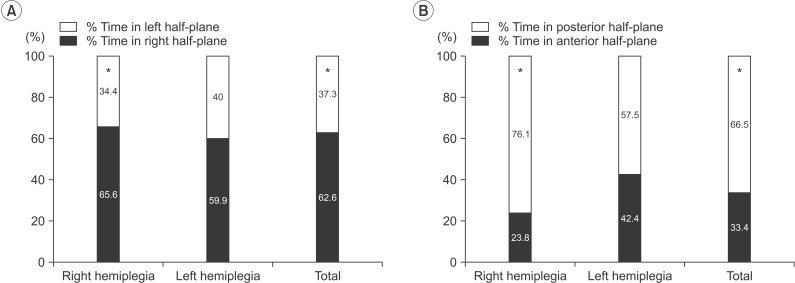





 PDF
PDF ePub
ePub Citation
Citation Print
Print


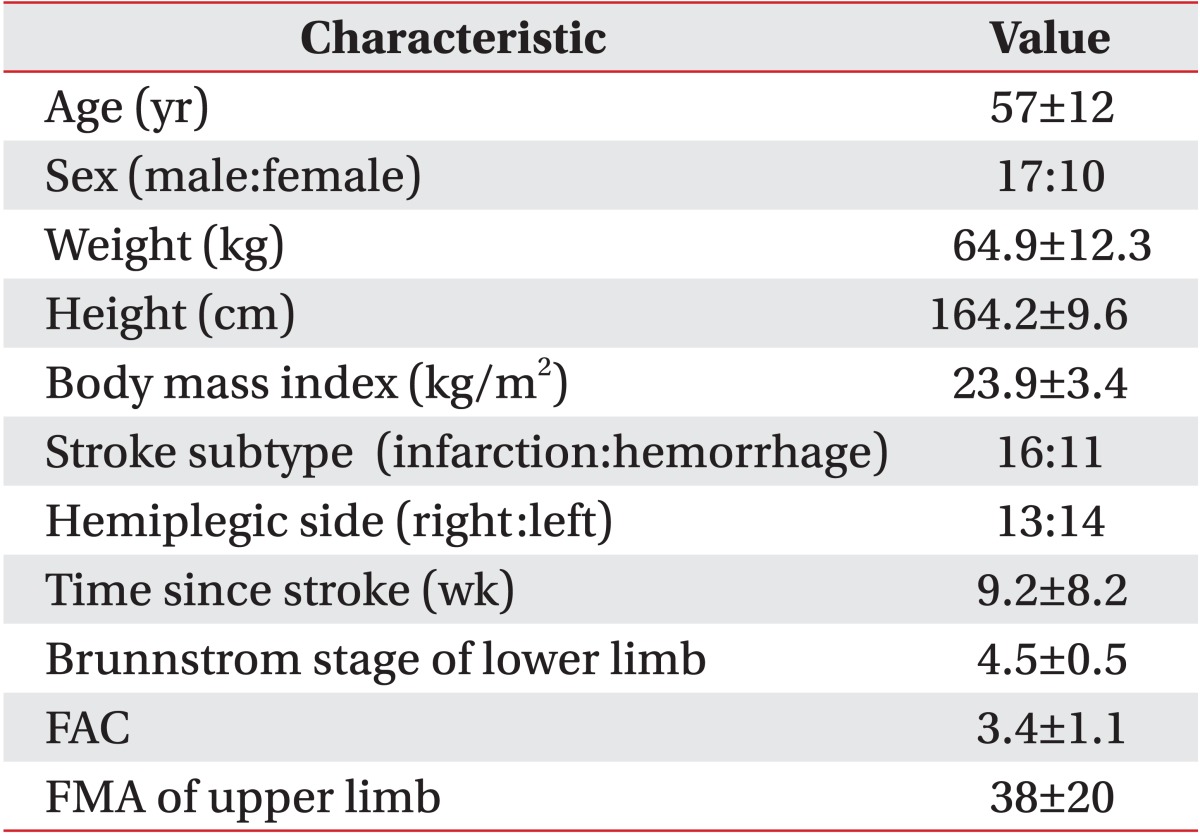

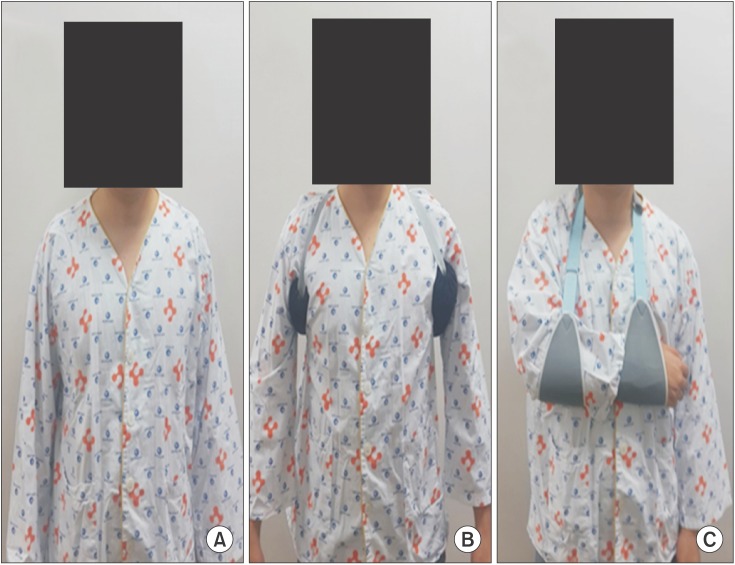

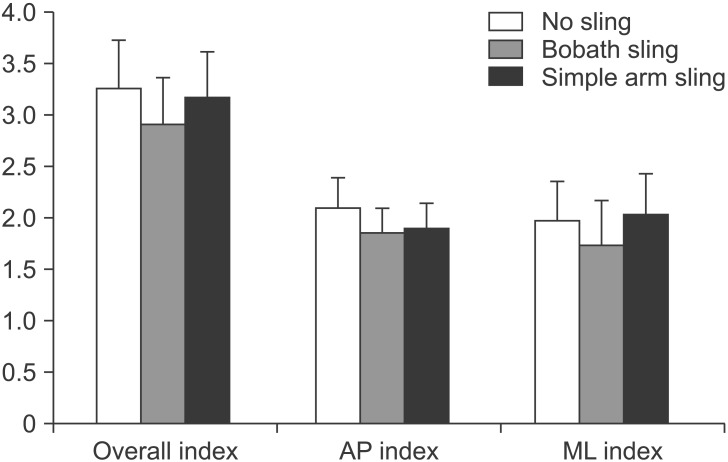

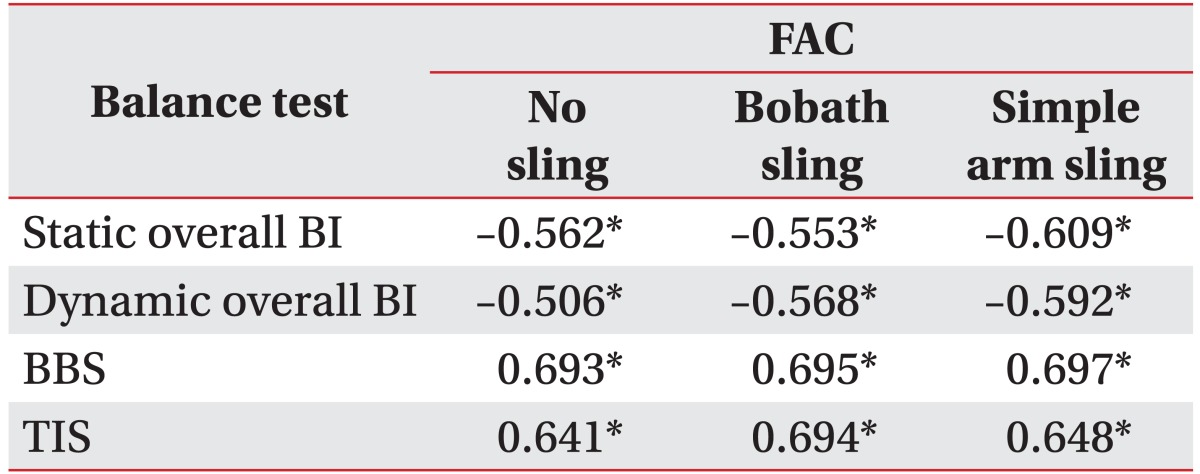
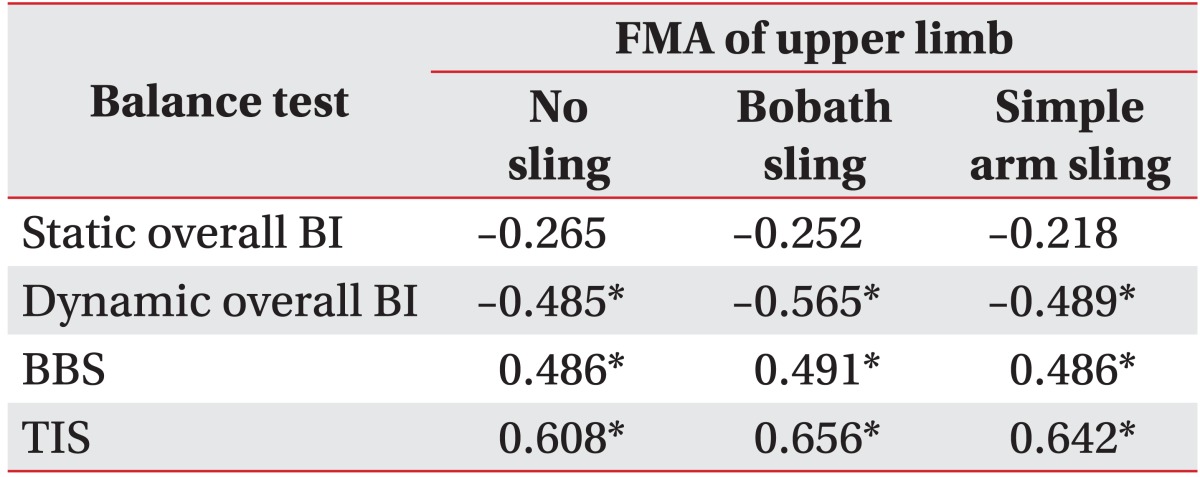
 XML Download
XML Download